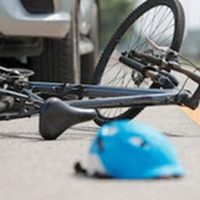What Causes Bicycle Crashes?

Driver error, usually operator impairment or aggressive driving, causes about 98 percent of the bicycle collisions in Texas. These collisions usually cause serious injuries, as another statistic shows. Bicyclists make up less than 1 percent of vehicle traffic, but they account for almost 3 percent of fatal accident victims. Serious bicycle collision injuries include internal injuries, broken bones, head injuries, and other wounds that are normally permanent.
If the driver error that caused the bicycle crash was negligence, or a lack of care, a Sugar Land bicycle accident lawyer can go to court and obtain the financial compensation these victims need and deserve. This compensation usually includes money for economic losses, such as medical bills, and noneconomic losses, such as pain and suffering. Usually, these claims settle out of court, which allows victims to get their compensation faster and move on with their lives sooner.
Driver Impairment
Additional punitive damages are often available in extreme driver impairment matters. In 2021, an outraged Corpus Christi jury ordered a bar to pay $300 billion in punitive damages. A witness testified that the bar served the tortfeasor (negligent driver) at least eleven drinks. At the time of the fatal crash, the tortfeasor’s BAC level was over three times the legal limit. Other sources of driver impairment include:
- Substance Abuse: Especially in parts of Greater Houston, where recreational marijuana is at least semi-legal, “stoned” drivers often cause more wrecks than “drunk” drivers. The impairing effects of alcohol build slowly over time, but the impairing effects of marijuana hit tortfeasors like a ton of bricks after the first puff of a joint or bite of an edible. Many over-the-counter medicines have roughly the same effect. My last NyQuill hangover lasted the better part of a day.
- Severe Fatigue: Drowsiness, like alcohol and certain drugs, impairs judgment and motor skills. People need to be functional in both areas to safely operate motor vehicles. Furthermore, extreme fatigue, which is infinitely more dangerous, is shockingly common. 40 percent of drivers admit they’ve literally fallen asleep at the wheel.
- Distracted Driving: This form of driver impairment is also widespread. The problem goes well beyond device distraction, which accounts for less than 20 percent of distracted driving wrecks. Non-device distraction includes eating while driving, talking to passengers while driving, drinking while driving, and any other activity that’s cognitively (mind off driving), visually (eyes off the road), or manually (hand off the wheel) distracting.
A Missouri City personal injury lawyer usually obtains substantial compensation in these cases. Arguably, these tortfeasors are reckless. They know they shouldn’t get behind the wheel, and yet they do so anyway, intentionally putting people at risk.
Aggressive Driving
Speeding is the most common, and most dangerous, aggressive driving-related bicycle accident cause in Harris County.
Speed increases the risk of a wreck as well as the force in a collision. Speeding drivers cannot react quickly enough to a hazard like a slow-moving bicycle in a regular traffic lane. Furthermore, speed increases the force in a collision, according to Newton’s Second Law of Gravity.
TBFTL (Turned But Failed To Look) aggressive driving also causes many bicycle wrecks. As mentioned above, bicyclists only account for a fraction of vehicle traffic. Therefore, many tortfeasors simply aren’t looking out for them. Granted, small and slow bicycles are difficult to see, especially under certain conditions. However, this difficulty doesn’t excuse negligence. If anything, this difficulty requires drivers to slow down and use extra caution.
Reach Out to a Diligent Harris County Attorney
Injury victims are entitled to significant compensation. For a confidential consultation with an experienced personal injury attorney in Missouri City, contact the Henrietta Ezeoke Law Firm. We routinely handle matters throughout the Lone Star State. Virtual, home, and hospital visits are available.
Source:
drivethru.gsa.gov/DRIVERSAFETY/DistractedDrivingPosterA.pdf
